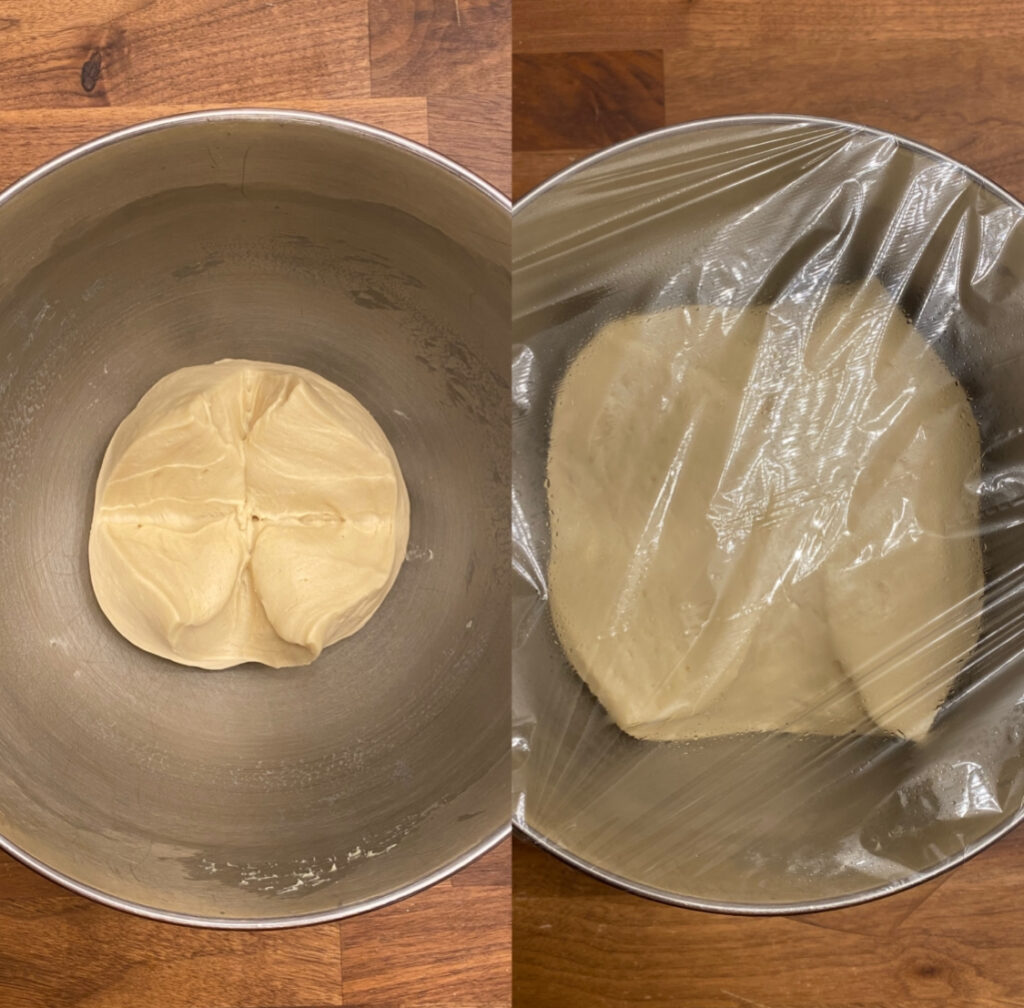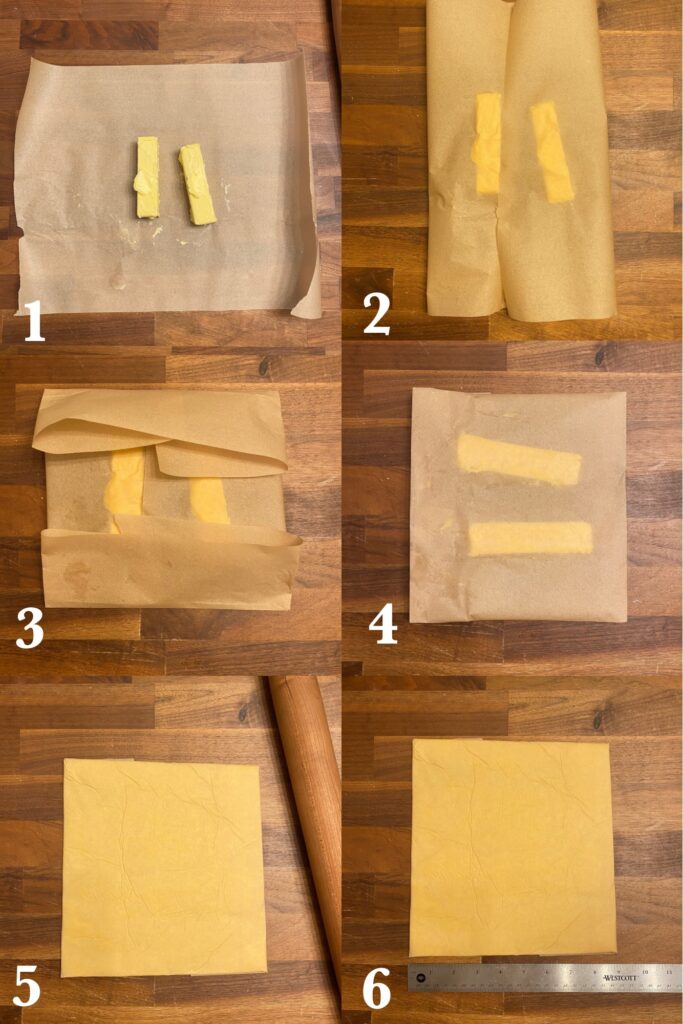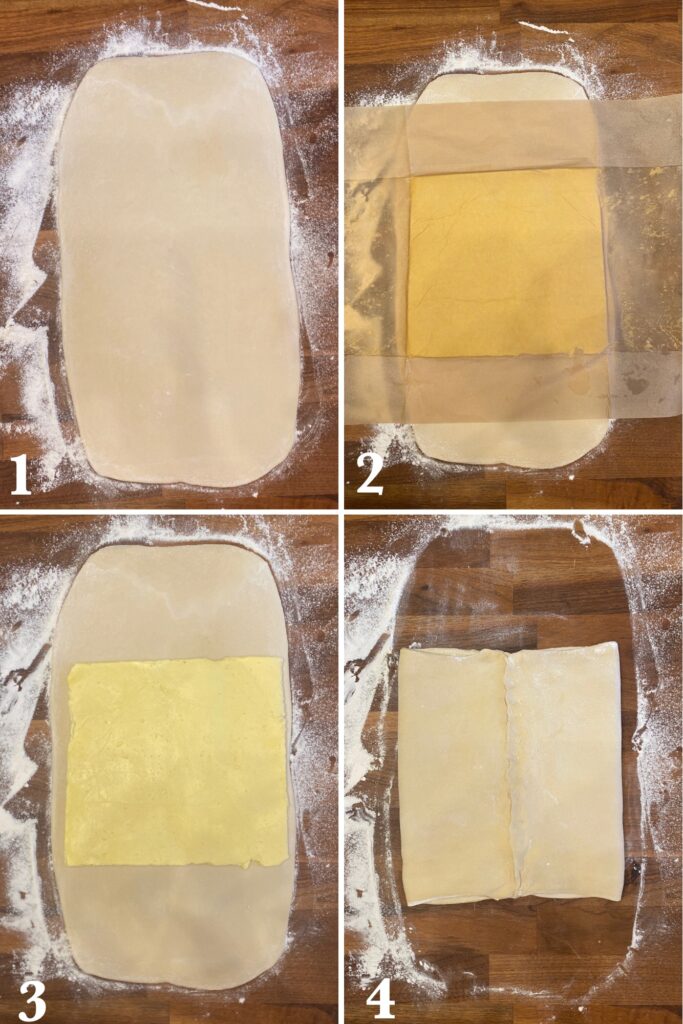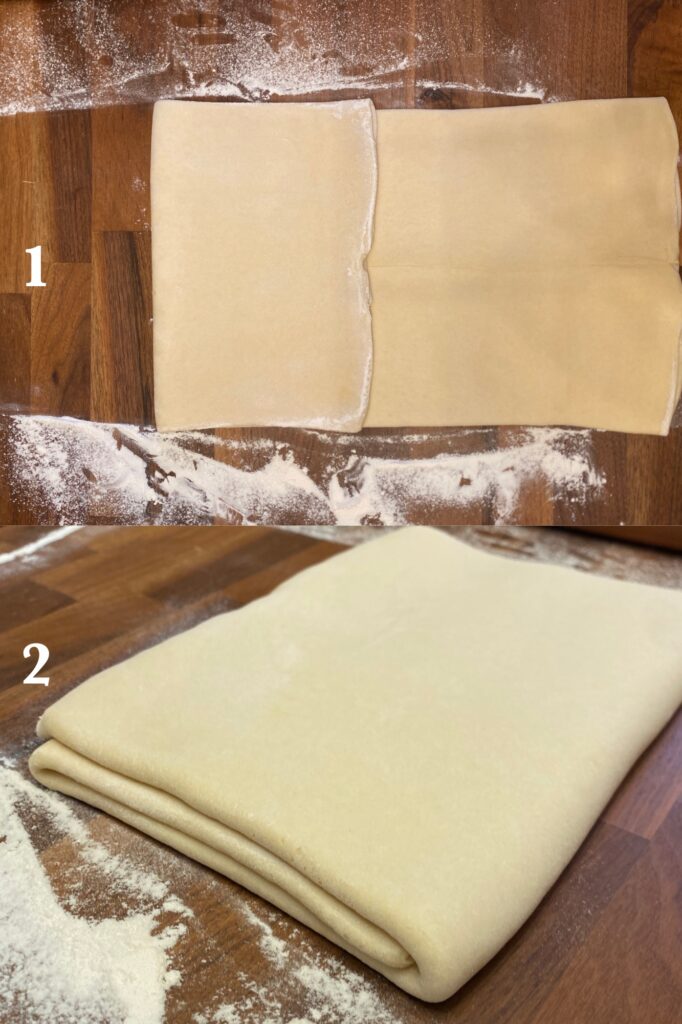


Some people say croissants are an extremely hard pastry to make. I promise you they are NOT. They do require more time and patience than the average recipe but, if you follow this croissant recipe to a T you'll be enjoying these buttery, flakey, puffy suckers soon enough.
*Important Note - I highly recommend reading through all of these tips and special notes to ensure a successful batch of croissants. These guys can be pretty finicky!

When making the dough it may seem too shaggy or sticky in the beginning. Trust the process and keep kneading! At the end of your kneading time you will have dough that you can easily shape into a ball that won't stick to your hands. Before letting it rest, cut an "X" on the top so that when it rises, the dough will be square-ish. This will make rolling it out immensely easier.

Choosing what kind of butter to use in your butter block MATTERS. You want butter that has a high fat content. European butter is a safe bet to use. The high fat content makes the butter easier to manipulate. I use Kerrygold. Salted vs. unsalted? You could use whichever you'd like. However, I think salted gives this croissant recipe the buttery flavor you're looking for when you want a croissant.
I added step by step pictures to help walk you through the steps. You'll start off with a piece of parchment paper. Place the butter on it and fold the sides over. Then fold the top and bottom down to created an enclosed square. Try to make the block measure between 8 to 9 inches. Finally, using a rolling pin roll the butter to the edges of the square. Try to make the butter block into a completely even layer. Refrigerate over night.

*Try to keep the dough and butter from getting warm. This will cause the butter to melt into the dough and you won't get the layers you want with croissants. Work fast!
After the detrempe has rested overnight, roll it out on a floured surface. You want the length to be twice as long as your butter block and the width to be about the same, like the reference picture. Then place the butter on the dough and fold the long sides of the dough over on top of the butter. The dough should meet up with itself in the middle. Before rolling the dough out to begin laminating, rotate it 90 degrees (see picture 4.)

Lamination is the process of creating layers of butter and dough. This croissant recipe calls for a total of 3 letter folds in order to laminate. A letter fold is when you roll the encapsulated dough out in a long rectangle. Then take the left side, as show in picture 1, and fold it over the middle. To finish the letter fold you will take the right side and lay that on top of the side you folded over first. The final result should look like picture 2. There is an hour resting time between folds. This ensures that the dough won't get over worked or too warm.
* use a pastry brush to brush excess flour off of the dough before doing the folds

Check out more recipes here!
In a bowl fitted for a stand mixer combine the yeast and warm water. Let that sit for 3 minutes. Add in the milk, egg, flours, sugar, and salt. Knead on low speed. Once combined, add the 40g of butter 1 tbsp at a time while still kneading on low speed. Continue to knead for 15 minutes.
Form the dough into a ball and cut an X on the top using a sharp knife. Place the dough back into the bowl and cover. Rest at room temperature for 45 minutes.
While the dough is resting, make the butter block. Put the butter on a piece of parchment paper. Fold the parchment paper so the butter is encapsulated in a square. Roll out the butter with a rolling pin to fill out the square. Make sure the butter is in an even layer. Refrigerate overnight. After the dough has rested at room temperature for 45 minutes, transfer to the refrigerator to rest for 10-12 hours
After the dough has rested in the fridge for 10-12 hours, roll it out to the width of your butter block and length of your butter block x2. Then place the butter in the center of the dough and fold the sides of the dough on top of the butter. Roll out the dough and do a letter fold. Wrap in Saran Wrap and place in the freezer for 15 minutes. Then transfer to the refrigerator for 45 minutes.
Roll out the dough again and do another letter fold. Wrap the dough in plastic wrap and place in the freezer for 15 minutes. Then transfer to the refrigerator for 45 minutes.
Roll out the dough and do one last letter fold. Total of 3 letter folds. Wrap in plastic wrap. Place in the freezer for 15 minutes then transfer to the fridge for 30 minutes.
Before your final roll out of the dough, boil a small pot of water. Place the boiling pot of water in the oven. This creates a "proofing box"
Roll out the dough so it is 1/4 inch thick. Cut out your triangles and roll your croissants. Cover with plastic wrap and place in the oven. Proof for 2-2.5 hours. They should have puffed up and can jiggle when you move the tray.
When they are done proofing transfer the trays of croissants to the fridge for 20 minutes. While those are chilling in the fridge, preheat the oven to 475. Whisk an egg to make the egg wash. Brush the egg wash on the tops layer of the croissant avoiding the sides of the exposed laminated dough. Bake the croissants at 475 for 5 minutes then drop the heat to 425 and bake for 15 minutes. Best eaten immediately :)